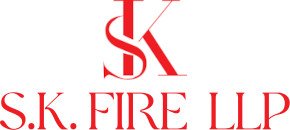Fire Hydrant Systems: Enhancing Fire Safety
Fire safety is a paramount concern in building design and construction. One critical aspect of ensuring adequate fire protection is the installation of fire hydrant systems within buildings. These systems serve as vital tools for firefighters and building occupants alike, providing access to water for firefighting purposes in the event of an emergency. In this article, we delve into the essentials of fire hydrant systems in buildings, including their components, operation, maintenance, and importance in safeguarding lives and property.
Importance of Fire Hydrant Systems
Fire hydrant systems play a pivotal role in enhancing the fire safety measures within buildings. By providing a readily available water source, these systems empower occupants and firefighters to combat fires effectively, minimizing the risk of injury, loss of life, and property damage.

Components of Fire Hydrant Systems
Understanding the components of a fire hydrant system is crucial for proper installation, maintenance, and operation.
Main Water Supply Connection
The main water supply connection serves as the primary source of water for the fire hydrant system. It is typically connected to the building's municipal water supply or an on-site water storage tank.
Fire Hydrant Valves
Fire hydrant valves control the flow of water within the system. These valves are strategically placed throughout the building, allowing firefighters to access water from various points as needed.
Hose Reels and Nozzles
Hose reels and nozzles are integral components of the fire hydrant system, providing a means for firefighters to direct water towards the source of the fire. They are often located in easily accessible areas, such as stairwells or corridors.
Types of Fire Hydrant Systems
Fire hydrant systems in buildings can be classified into two main types: wet riser systems and dry riser systems.
Wet Riser Systems
In wet riser systems, water is constantly present within the pipes, ready for immediate use in case of a fire emergency. These systems are suitable for buildings with adequate water pressure and are typically found in high-rise structures.
Dry Riser Systems
Dry riser systems, on the other hand, do not contain water within the pipes under normal conditions. Instead, water is supplied to the system from an external source, such as a fire engine, when needed. These systems are commonly installed in low-rise buildings or areas with insufficient water pressure.
Operation of Fire Hydrant Systems
Fire hydrant systems are designed to be user-friendly, allowing building occupants or firefighters to activate them quickly during emergencies.
Activation and Usage
In the event of a fire, building occupants can activate the fire hydrant system by pulling the appropriate fire alarm or operating the manual activation switch. Firefighters then connect hoses to the hydrant valves and use water to extinguish the fire.
Maintenance and Testing
Regular maintenance and testing are essential to ensure the reliability and effectiveness of fire hydrant systems.
Inspections and Testing
Building owners or managers are responsible for conducting routine inspections and testing of fire hydrant systems to ensure they are in proper working order. This may include checking for leaks, testing water pressure, and verifying the functionality of valves and hoses.
Annual Certification
In many jurisdictions, fire hydrant systems are required to undergo annual certification by licensed professionals to ensure compliance with safety regulations and standards.
Conclusion
Fire hydrant systems are indispensable components of building fire safety infrastructure, providing a reliable water source for firefighting efforts. Understanding the components, types, operation, maintenance, and importance of these systems is crucial for ensuring the safety and well-being of building occupants. By prioritizing the installation and upkeep of fire hydrant systems, building owners can significantly enhance fire safety measures and mitigate the risk of fire-related incidents.
